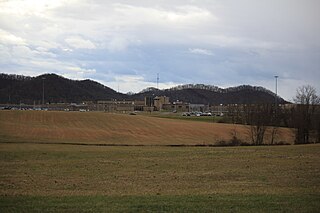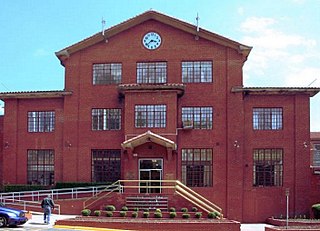
Capital punishment is a legal penalty in the U.S. state of Ohio. All executions, however, have been suspended indefinitely by Governor Mike DeWine, and lethal injection will no longer be used as a method of capital punishment. DeWine has suspended all executions until a new method of execution is chosen by the Ohio General Assembly. That, however, does not seem to be a legislative priority, and as a result, there are likely to be no more executions in the state of Ohio for an indefinite period. The last execution in the state was in July 2018, when Robert J. Van Hook was executed via lethal injection for murder.

The list of people executed by the U.S. state of Texas, with the exception of 1819–1849, is divided into periods of 10 years.
Shaka Sankofa was a Texas death-row inmate who was sentenced to death at the age of 17 for the murder of 53-year-old Bobby Grant Lambert in Houston, Texas, on May 13, 1981. He was executed by lethal injection on June 22, 2000 in Huntsville, Texas.
Charles Brooks Jr., also known as Shareef Ahmad Abdul-Rahim, was a convicted murderer who was the first person to be executed using lethal injection. He was the first prisoner executed in Texas since 1964, and the first African-American to be executed anywhere in the United States in the post-Gregg era.

Capital punishment is a legal penalty in the U.S. state of Texas for murder, and participation in a felony resulting in death if committed by an individual who has attained or is over the age of 18.

Marion Butler Dudley was an American murderer who was executed by lethal injection in Huntsville, Texas for a robbery and shooting that resulted in the deaths of four people. He was born in Tuscaloosa County, Alabama.

Texas State Penitentiary at Huntsville or Huntsville Unit (HV), nicknamed "Walls Unit", is a Texas state prison located in Huntsville, Texas, United States. The approximately 54.36-acre (22.00 ha) facility, near downtown Huntsville, is operated by the Correctional Institutions Division of the Texas Department of Criminal Justice. The facility, the oldest Texas state prison, opened in 1849.
Capital punishment in Connecticut formerly existed as an available sanction for a criminal defendant upon conviction for the commission of a capital offense. Since the 1976 United States Supreme Court decision in Gregg v. Georgia until Connecticut repealed capital punishment in 2012, Connecticut had only executed one person, Michael Bruce Ross in 2005. Initially, the 2012 law allowed executions to proceed for those still on death row and convicted under the previous law, but on August 13, 2015, the Connecticut Supreme Court ruled that applying the death penalty only for past cases was unconstitutional.
Capital punishment was abolished in Colorado in 2020. It was legal from 1974 until 2020 prior to it being abolished. All valid death sentences as of 2020 have since been commuted to life sentences by governor Jared Polis.
Jeffery Lee Wood is a man on death row in the state of Texas. He was scheduled for execution in 2008 and 2016 before stays of execution were issued. As in the case of Kenneth Foster, Wood's death sentence stems from the Texas law of parties, which is related to the felony murder rule.

Allan B. Polunsky Unit is a prison in West Livingston, unincorporated Polk County, Texas, United States, located approximately 5 miles (8.0 km) southwest of Livingston along Farm to Market Road 350. The Texas Department of Criminal Justice (TDCJ) operates the facility. The unit houses the State of Texas death row for men, and it has a maximum capacity of 2,900. Livingston Municipal Airport is located on the other side of FM 350. The unit, along the Big Thicket, is 60 miles (97 km) east of Huntsville.
Death row, also known as condemned row, is a place in a prison that houses inmates awaiting execution after being convicted of a capital crime and sentenced to death. The term is also used figuratively to describe the state of awaiting execution, even in places where no special facility or separate unit for condemned inmates exists.

O. B. Ellis Unit is a Texas Department of Criminal Justice prison located in unincorporated Walker County, Texas, 12 miles (19 km) north of Huntsville. The unit, with about 11,427 acres (4,624 ha) of space, now houses up to 2,400 male prisoners. Ellis is situated in a wooded area shared with the Estelle Unit, which is located 3 miles (4.8 km) away from Ellis. From 1965 to 1999 it was the location of the State of Texas men's death row.
Humberto Leal García Jr. was a Mexican national who was sentenced to death in the US state of Texas for the May 21, 1994, rape, torture, and murder of Adria Sauceda in San Antonio. Despite calls from US President Barack Obama, the US State Department, and Mexico on Texas for a last-minute reprieve, Leal was executed as scheduled on July 7, 2011.
Capital punishment is a legal penalty in the U.S. state of North Carolina.

Gustavo Julian Garcia Jr. was an American prisoner from McKinney, Texas, who was executed for the 1990 murder of Craig Turski.

Johnny Frank Garrett was a death row prisoner executed by the State of Texas.
The Texas law of parties states that a person can be criminally responsible for the actions of another in certain circumstances, including "[i]f, in the attempt to carry out a conspiracy to commit one felony, another felony is committed by one of the conspirators, all conspirators are guilty of the felony actually committed, though having no intent to commit it, if the offense was committed in furtherance of the unlawful purpose and was one that should have been anticipated as a result of the carrying out of the conspiracy."






